Apart from basing improvisations on scales,modes and key centres, intervalic patterns can be incorporated into your solos to provide added interest and excitement.
Intervals are the basic building blocks of both scales and chords and possess an inherent strength and structure of their own. Here we will look at some common interval patterns, then build more complex patterns on top of the basic patterns. This concept will hopefully, spark further investigation by students wishing to compliment their existing improvisational knowledge and experience.
These intervalic patterns should be used in conjunction with all other improvisational methods. We are not discarding what we already know, but simply developing another area of improvisational technique. Some of these interval patterns are already familiar to us, such as the Major 2nd intervals, which we recognise as a Whole Tone scale. Also the Minor 3rd intervals are recognisable as a Diminished arpeggio. Intervals built on Minor 2nd intervals would of course simply be the Chromatic Scale.
Lets look at the basic interval patterns first. Work from the 6th string E across the fretboard to the first string. If there is more than one note on a string play from the lowest note to the highest note on that string, working from the 6th string across to the first string.
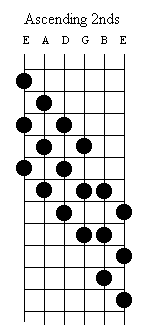 |
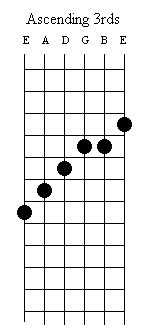 |
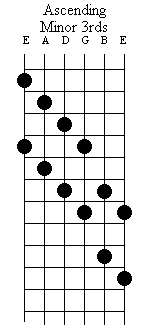 |
 |
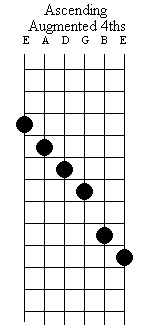 |
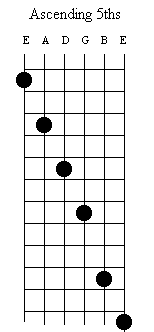 |